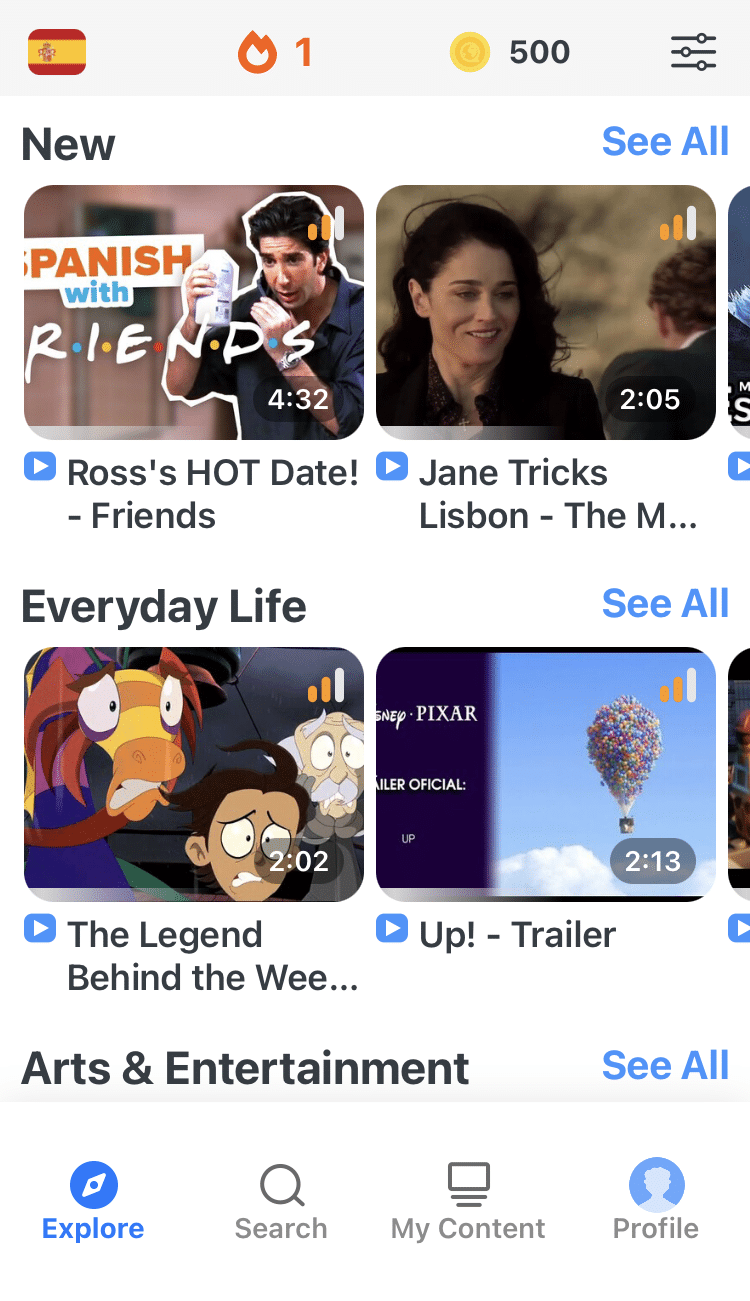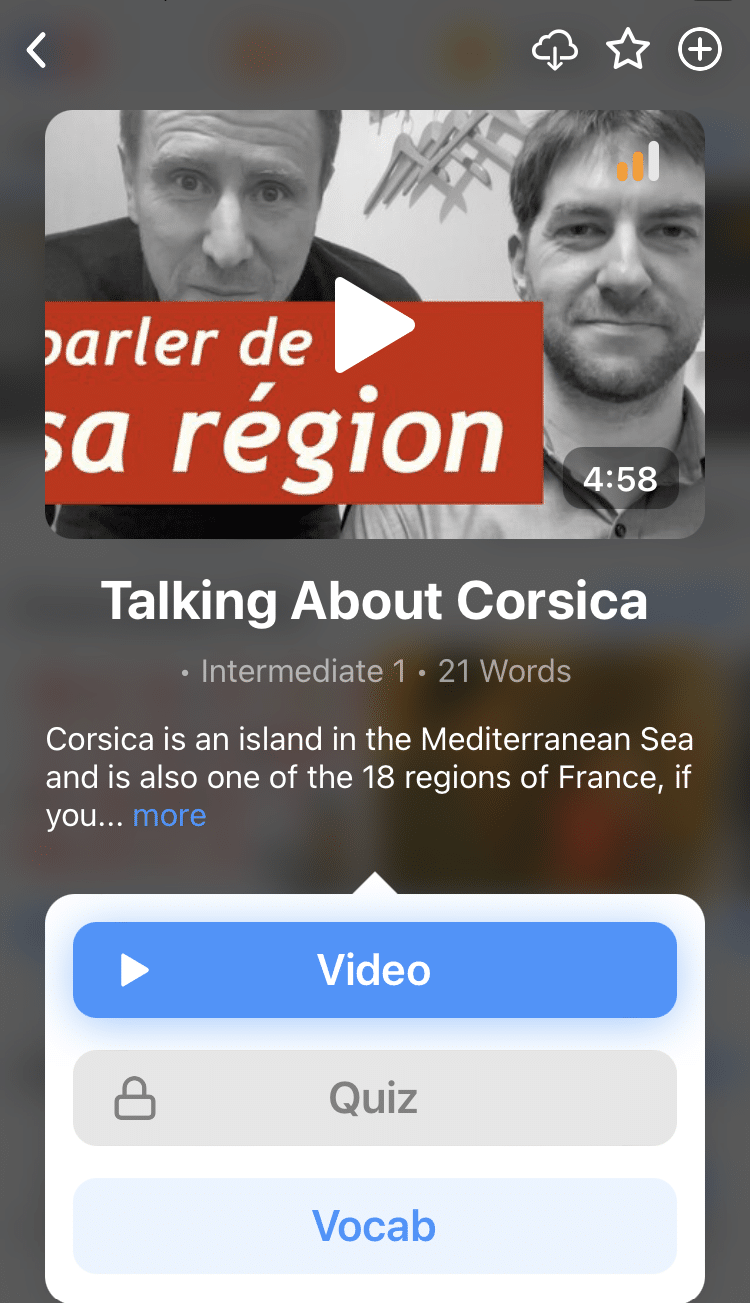
8 Ways to Increase Your Active Vocabulary in a Foreign Language
There’s tons of research and discussion about how to expand your vocabulary in a foreign language.
The kicker is, most polyglots talk about expanding vocabulary in general—they don’t divide it into active and passive.
Active vocabulary is what you need to grow to be able to communicate since it’s the words you can actively recall during real-life situations.
So in this post, you’ll learn the difference between active and passive vocabulary, plus eight ways to grow your active vocabulary fast.
Contents
- Active Vocabulary vs. Passive Vocabulary
- How to Improve Your Active Vocabulary
- 1. Describe words you don’t know instead of looking them up
- 2. Identify gaps in your vocabulary by reviewing your conversations
- 3. Practice using new words in real-life situations
- 4. Read often
- 5. Use a language learning resource
- 6. Focus on language output activities
- 7. Journal your thoughts consistently
- 8. Record yourself speaking about specific topics
- And One More Thing...
Download: This blog post is available as a convenient and portable PDF that you can take anywhere. Click here to get a copy. (Download)
Active Vocabulary vs. Passive Vocabulary
Active vocabulary is the words you can think of and use right away when communicating in a language.
Passive vocabulary includes all the words you recognize and understand. But not all of them occur to you when speaking or writing.
When learning a language, your active and passive vocabularies change constantly. You use words, forget words, try out new words and review previously learned words.
But your passive vocabulary is always much bigger—even in your native language.
How to Improve Your Active Vocabulary
1. Describe words you don’t know instead of looking them up
What do you do when you’ve forgotten the words you need to express your thoughts in Chinese, Spanish or whatever language you’re learning?
You clutch at straws—AKA, dictionaries.
And what do you do when forgetting a word in your native language?
You’ll describe its meaning or use a synonym. You don’t stop to open up a dictionary.
Do this in your foreign language rather than running for the dictionary every time you’re missing a word, and your brain will get more adept at searching for the vocabulary you need.
And in the worst cases, you’ll get better at describing things and maintaining the flow of conversation.
2. Identify gaps in your vocabulary by reviewing your conversations
You’ve likely already adopted plague words to fill the gaps when you struggle to verbalize your thoughts.
For example, let’s take plague words such as very and really.
Instead of learning more specific synonyms, we attach these to other words.
We can say “very big” instead of “huge,” or “very big” instead of “enormous” or “gigantic.”
We can say “thing” and use it as a substitute for tons of other words rather than having to think of more specific, descriptive word.
Now, think of which plague words you might be leaning on too much in your foreign language. Then, try to stop using your favorite word replacements.
Here are a few ways you can identify these words:
- Re-read your messages with friends on Facebook, WhatsApp or whatever messenger you use.
- Make a list of the words you often choose to fill vocabulary gaps.
- Give the list to a friend and ask them to scold you every time you write or say mentioned words.
- Reward a friend with dinner or wash their car whenever you use one-size-fits-all words 50 times.
With no sanctions or motivation, it will be difficult to get rid of that hoary vocabulary.
After you learn to slow down a little for very, thing, amazing and any other favorite plague words, your memory will know that it can’t take the easy way out and will start to deliver synonyms from your passive vocabulary.
3. Practice using new words in real-life situations
One of the most common pieces of advice for language learners is: “Write new words in a notebook or on flashcards.”
But even if you go about doing this, the problem is words are difficult to remember without context.
Instead of reviewing a list of isolated words and phrases, practice your words in context and visualize them in real situations.
You can do this in a language learning app like FluentU, which teaches vocabulary in the context of authentic videos made by and for native speakers.
FluentU takes authentic videos—like music videos, movie trailers, news and inspiring talks—and turns them into personalized language learning lessons.
You can try FluentU for free for 2 weeks. Check out the website or download the iOS app or Android app.
P.S. Click here to take advantage of our current sale! (Expires at the end of this month.)
Another way to do this is to write, write and write some more.
Write short stories and messages of all kinds.
Choose your favorite topics and platforms: Write on social media, keep a diary, jot thoughts down in a Word file, whatever.
The trick is to insert as many words there as possible, as often as possible.
Bring in synonyms, different connotations, new grammar constructions and various writing styles. Revisit and reread your writings from time to time to avoid repetitions.
Okay, some of us are too lazy to write every day. Or, we don’t like writing and consider it a dull pastime to practice regularly.
If you’re amongst these non-writers and procrastinators, provide yourself with positive reinforcement to stay motivated:
- Take part in a competition
- Accept a writing challenge
- Make a bet with your language teacher or friends
- Reward yourself for achievements (i.e., buy yourself a donut after you’ve successfully written something every day for one week)
4. Read often
You know that reading helps to expand vocabulary.
It forces you to look at words you might not have heard or seen before, making you search for meanings to understand the content.
More than that, reading improves memory and concentration, which is essential for language learners to have.
But do you know what and how to read for this trick to work?
Memoirs and autobiographies
When reading fiction, we get into the plot and don’t pay attention to the rich verbal expression of the writer.
So try reading first-person stories. Leisurely and thoughtfully. And if you can, read aloud.
Poems
Just like we have plague words, we also have plague grammar constructions that we become reliant on.
In English, it can be “there is, there are” sentences or, in Spanish, over-indulging in the easy-to-form past participle.
Read and learn poems by heart to absorb your target language’s vocabulary and syntax.
Poems typically get creative with sentence construction, juggle word order and replace long phrases with shorter, more powerful phrases.
So reading them is an excellent impetus for picking up new grammar patterns.
5. Use a language learning resource
Language learning resources—like textbooks and online courses—are excellent for building your active vocabulary because they usually test you after learning new words.
Most resources include learning drills, exercises, quizzes and more.
These tools require you to actively recall the material you just studied, which moves them to your active vocabulary.
Resources typically teach you vocabulary in themes, which helps you learn the words in context.
You can then use authentic, immersion-type resources like podcasts, books, movies and videos to solidify the words you’ve learned from your main resource.
6. Focus on language output activities
You use your active vocabulary during output activities—any time you use and produce the language.
The two main output skills are speaking and writing.
The opposite of language output is input, which refers to listening and reading. This is where your passive vocabulary tends to take over.
So to strengthen your active vocabulary, you have to strengthen your language output skills.
A few ways you can do this are:
- Getting a language partner
- Hiring an online tutor
- Having regular conversations with native speakers through text or phone call
- Journaling
- Translating songs, your thoughts, messages, etc. into your target language
- Recording yourself speaking
- Sending audio messages in your target language
7. Journal your thoughts consistently
Journaling is one of the most effective output strategies that doesn’t involve speaking.
Find an empty notebook or journal and use it as you would in your native language.
Of course, you won’t immediately have the vocabulary to say everything you want—and you’ll probably feel frustrated at first. But the more you write, the quicker the words in your active vocabulary will come to you.
Plus, you’ll start using words in your passive vocabulary when you’re trying to grasp for the right way to write down your thoughts. As a result, those passive words become active.
Finally, if you can’t find the word you want to use and there’s no way around it, look it up and then study it like any other new vocabulary word.
8. Record yourself speaking about specific topics
Whether you have a conversation partner or not, recording yourself speaking is an effective way to supercharge your language output skills and get comfortable expressing yourself without fear of failure.
Find a random topic generator or question generator online.
I personally like Random Word Generator’s question generator.
It generates a specific, conversation-focused question that really makes you think, such as “What is the most selfish thing you do that you’re okay with?”
Next, set a timer for 5-15 minutes (depending on your availability and language level) and record yourself speaking about the topic until it goes off.
Like when journaling, write down any words you wanted to use but didn’t know. Then, look them up and learn them after.
The more you do this drill, the easier speaking will become and you’ll start thinking in the language faster.
Increasing your active vocabulary doesn’t have to be complicated. The first step is being aware of how it works.
Once you’ve applied the eight tricks above, you’ll be well on your way to boosting your active vocabulary every day.
Download: This blog post is available as a convenient and portable PDF that you can take anywhere. Click here to get a copy. (Download)
And One More Thing...
If you dig the idea of learning on your own time from the comfort of your smart device with real-life authentic language content, you'll love using FluentU.
With FluentU, you'll learn real languages—as they're spoken by native speakers. FluentU has a wide variety of videos as you can see here:
FluentU has interactive captions that let you tap on any word to see an image, definition, audio and useful examples. Now native language content is within reach with interactive transcripts.
Didn't catch something? Go back and listen again. Missed a word? Hover your mouse over the subtitles to instantly view definitions.
You can learn all the vocabulary in any video with FluentU's "learn mode." Swipe left or right to see more examples for the word you’re learning.
And FluentU always keeps track of vocabulary that you’re learning. It gives you extra practice with difficult words—and reminds you when it’s time to review what you’ve learned. You get a truly personalized experience.
Start using the FluentU website on your computer or tablet or, better yet, download the FluentU app from the iTunes or Google Play store. Click here to take advantage of our current sale! (Expires at the end of this month.)






